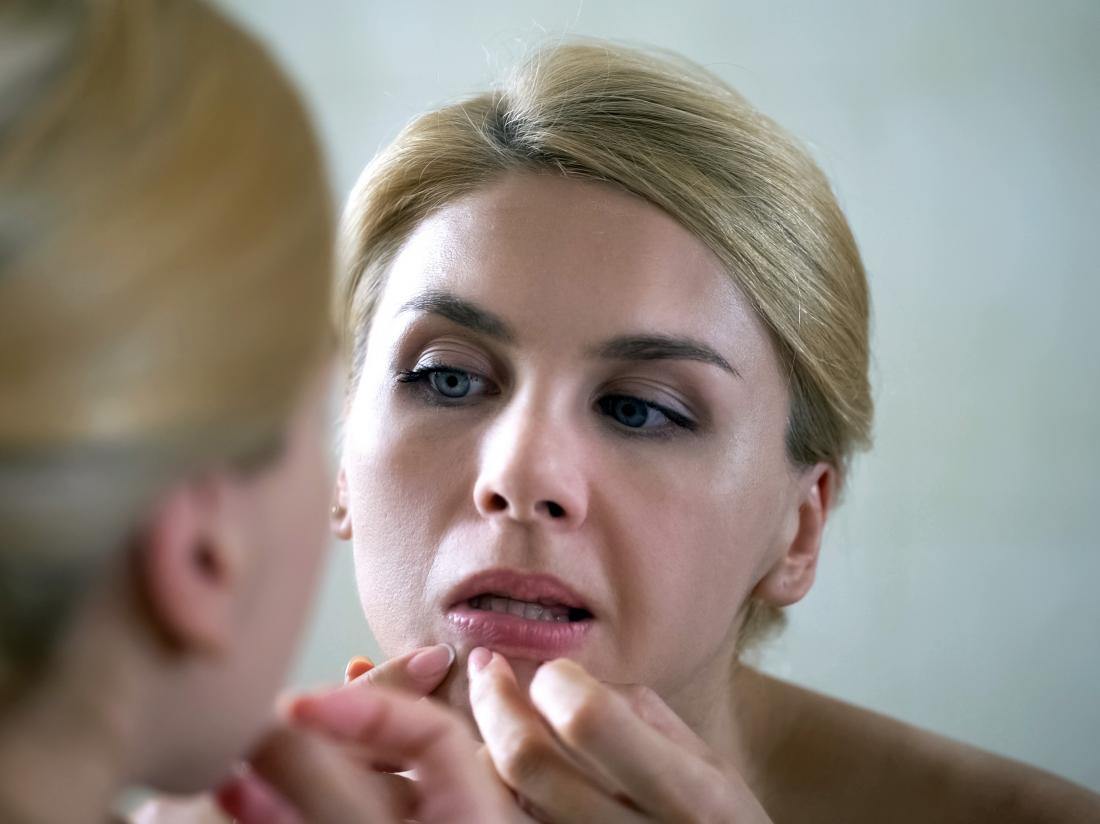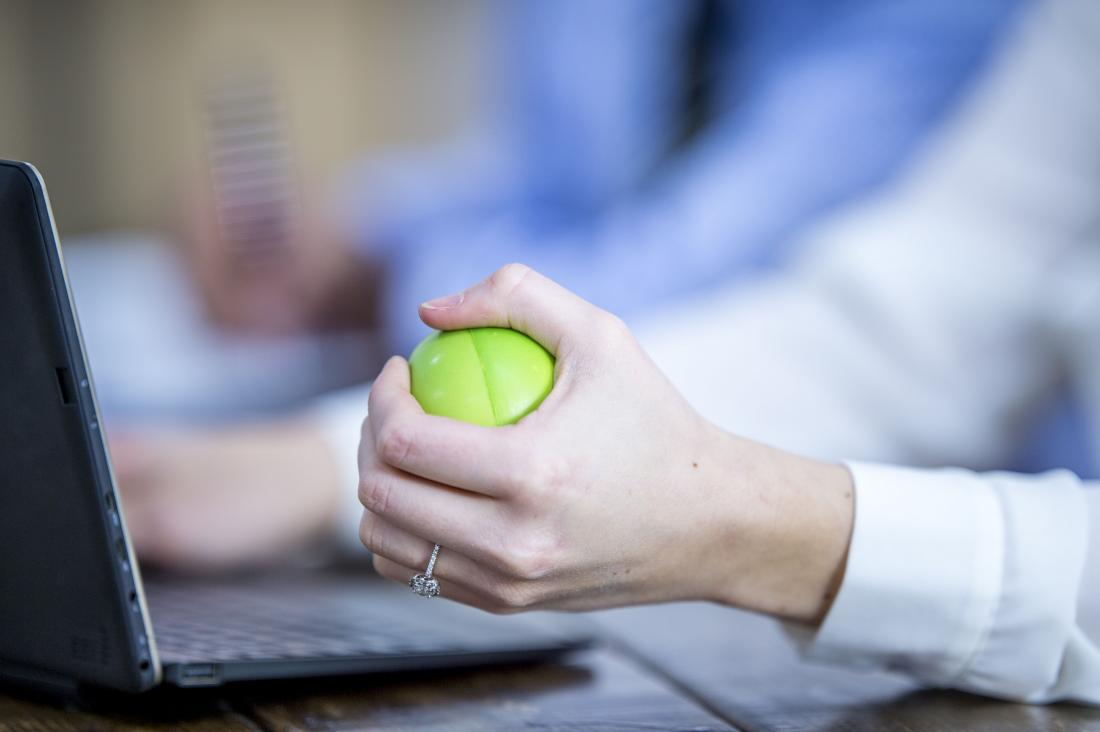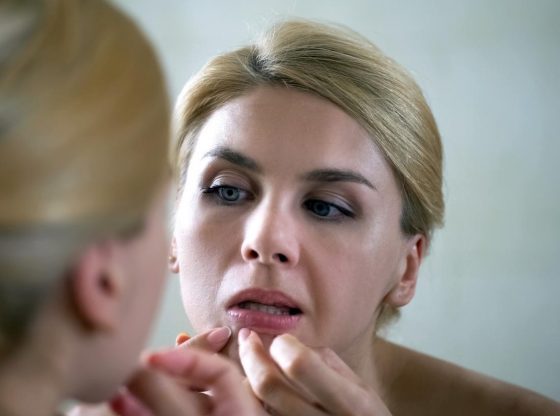The exact cause of skin picking disorder remains unknown. That said, it may develop alongside other health conditions, such as obsessive-compulsive disorder (OCD), attention deficit hyperactivity disorder (ADHD), or autism.
Skin picking disorder can significantly impact a person’s quality of life and overall health.
In this article, we discuss the potential causes and common treatments of skin picking.
What is skin picking disorder?

People with skin picking disorder may repeatedly pick at pimples, blisters, or scabs.
Skin picking disorder is a body focused repetitive behavior (BFRB) that affects about 1.4% of adults in the United States.
People with skin picking disorder may repeatedly pick, pull, or tear at healthy skin, pimples, blisters, or scabs.
Skin picking disorder occurs more frequently in females than males. Symptoms most often develop during adolescence and adulthood.
Symptoms of skin picking disorder include:
- engaging in skin picking despite multiple attempts to address the behavior
- developing recurring skin lesions or open wounds due to picking
- experiencing significant psychological, physical, or social impairment as a result of skin picking
People may pick their skin for various reasons. Some may feel compelled to remove perceived imperfections, while others pick in response to stress, boredom, or out of habit.
In many ways, skin picking disorder is a repetitive or obsessive grooming behavior similar to other BFRBs, such as hair pulling and nail picking.
Skin picking behaviors can last anywhere from a few minutes to several hours or several months, with periods of remission in between.
If untreated, skin picking can lead to painful lesions, bleeding, scars, and significant psychological distress.
Causes

Skin picking disorder may develop in response to stress or mental health conditions.
People can develop skin picking disorder in response to:
- An infection, rash, or injury that creates a scab: The scab may itch while it heals, which leads people to scratch or pick it until it bleeds and a new wound forms. They may then pick at the new scab. A picking cycle forms and the behavioral pattern becomes a habit.
- Stress or mental health conditions: During times of stress, people might pick or scratch their skin, pull their hair, or bite their nails to relieve it. Others might feel compelled to pick their skin as a form of self-grooming or in an attempt to remove real or imagined imperfections in the skin.
Although skin picking has no specific cause, it may result from biological and environmental factors.
Skin picking disorder can develop alongside OCD or another mental health condition. We discuss this in more detail below.
OCD
OCD is a mental health condition characterized by unwanted repetitive thoughts and behaviors. According to the National Alliance on Mental Illness, OCD affects more than 2% of the U.S. population.
The Diagnostic and Statistical Manual of Mental Disorders (DSM-5) lists skin picking as a common compulsion that develops in people with OCD.
Trichotillomania
Trichotillomania is a compulsive condition related to OCD. It leads to habitual behaviors such as hair pulling, nail biting, and teeth grinding.
An estimated 38% of people who have skin picking disorder also have trichotillomania.
ADHD
ADHD is a neurodevelopmental condition that interferes with a person’s ability to pay attention and control impulsive behaviors.
The Centers for Disease Control and Prevention (CDC) list ADHD as “one of the most common” neurodevelopmental conditions among children.
People with ADHD may develop skin picking disorder in response to their hyperactivity or low impulse control.
Autism spectrum disorder
Autism spectrum disorder (ASD) is a neurodevelopmental condition that affects behavior and communication.
Doctors consider autism a spectrum disorder because it can cause a vast range of symptoms that appear at different intensities.
Although autism symptoms can differ from person to person, common symptoms include:
- inconstant eye contact
- showing little or no enjoyment during activities or interactions involving other people
- showing more or less sensitivity to sensory information, such as noise, lights, or temperature
- repeating certain behaviors or phrases, which is known as echolalia
The behavioral symptoms of ASD can manifest as repetitive behavior, such as skin picking, that often includes self-injury.
Treatments
Treatment options for skin picking disorder usually include medication and therapy. Treating any underlying condition can help alleviate the impulse to pick.
Medication
Skin picking disorder related to an underlying mental health or developmental condition might respond to medications such as:
- selective serotonin reuptake inhibitors (SSRIs) and other antidepressants
- anticonvulsants such as lamotrigine (Lamictal)
- antipsychotics such as risperidone (Risperdal)
Therapy

A therapist may suggest an alternative to occupy the hands, such as squeezing a rubber ball or using a Rubik’s cube.
People with skin picking disorder may benefit from cognitive behavioral therapy (CBT), which focuses on addressing negative habits and impulse control issues.
During CBT, a mental health professional or counselor will help a person identify and address emotional, physical, and environmental triggers that contribute to negative behaviors.
They can suggest safer alternative activities for people who pick in response to stress, anxiety, or boredom. Alternatives can include:
- squeezing a rubber ball
- using a Rubik’s cube
- drawing, painting, or knitting
Those who unconsciously pick their skin may benefit from wearing gloves or adhesive bandages to prevent tissue damage and reduce the urge to pick.
People can take action at home by practicing stress management techniques and altering their environment to reduce exposure to potential triggers.
Tips for managing skin picking disorder at home include:
- applying soothing topical ointments, such as aloe vera gel or high quality coconut oil
- exercising regularly
- practicing yoga, meditation, or deep breathing exercises to reduce stress or anxiety
- removing or covering mirrors to avoid seeing skin blemishes
- hiding any tools used to pick or pull skin, such as tweezers, nail clippers, and scissors
Summary
Skin picking disorder, or excoriation disorder, is a repetitive behavior characterized by compulsive picking, scratching, or pulling of the skin.
People pick their skin for different reasons. For example, they may also have a mental health condition, such as OCD or ADHD. Repetitive behaviors such as skin picking are also common symptoms of ASD.
Without treatment, skin picking disorder can lead to open wounds, scars, and significant emotional distress. People with skin picking disorder may also experience social withdrawal and avoid interacting with friends and family due to their beliefs about their appearance.
Treatments for skin picking disorder focus on identifying triggers, addressing the behavior, and managing the symptoms of any underlying medical or psychiatric conditions.
CBT and other forms of therapy can help a person identify any psychological, physical, or environmental factors that may be contributing to their skin picking behavior. SSRIs, anticonvulsants, and antipsychotics can also help treat skin picking disorder.
A trained medical professional can help a person decide which treatment option may be best for them.
